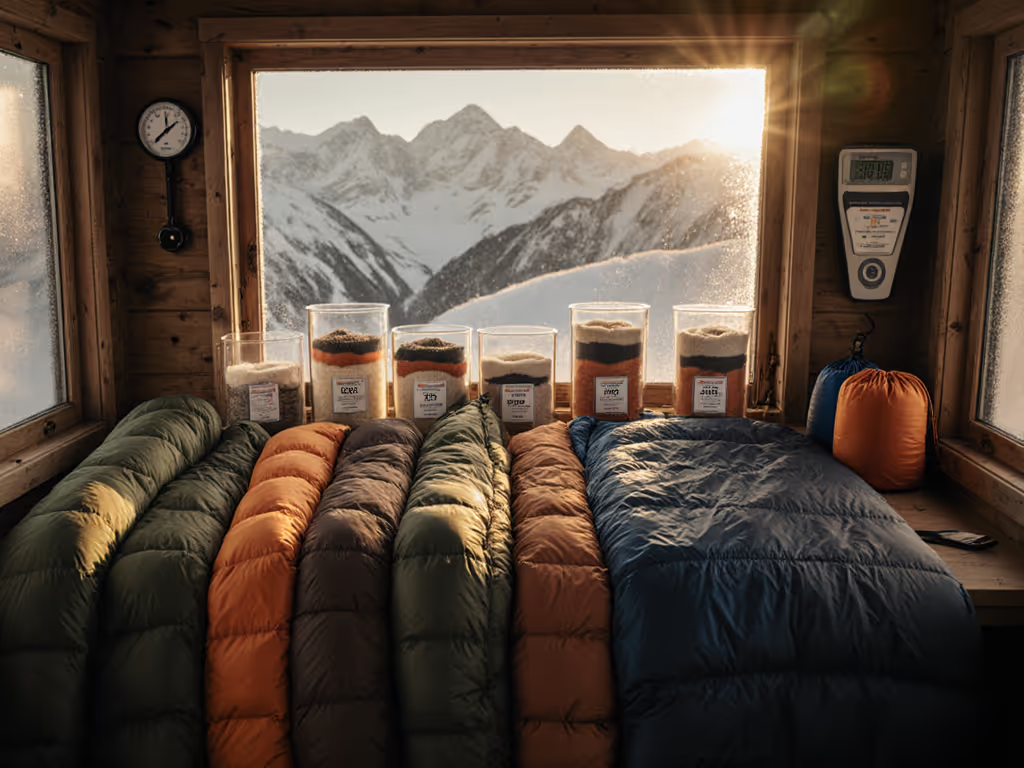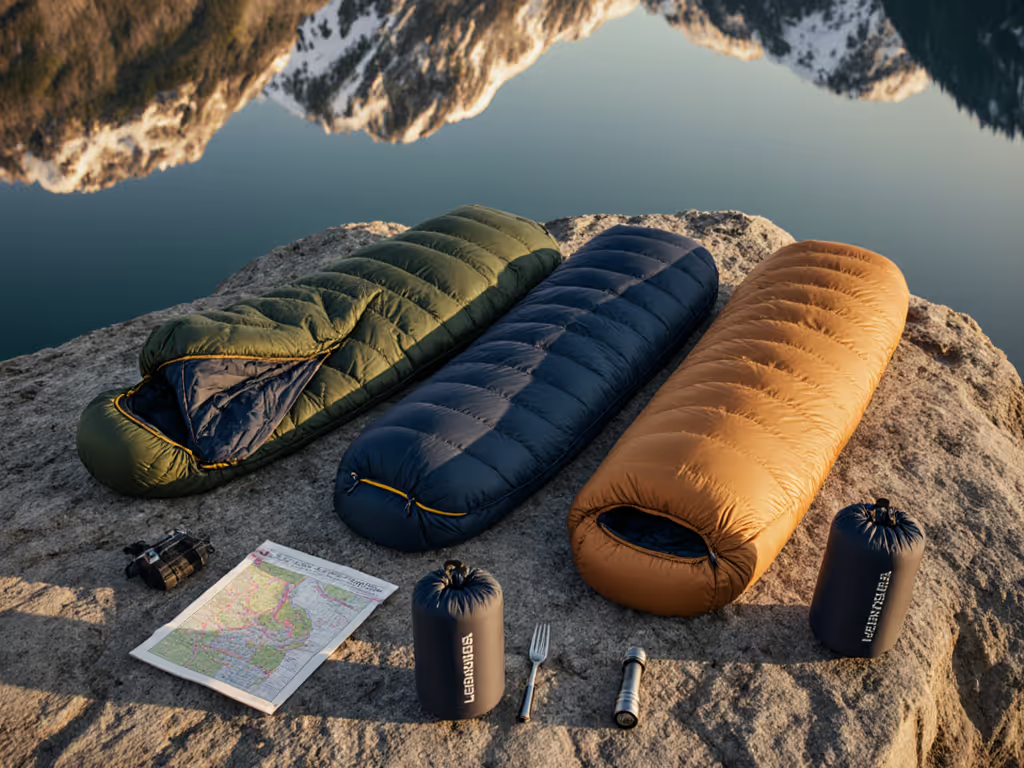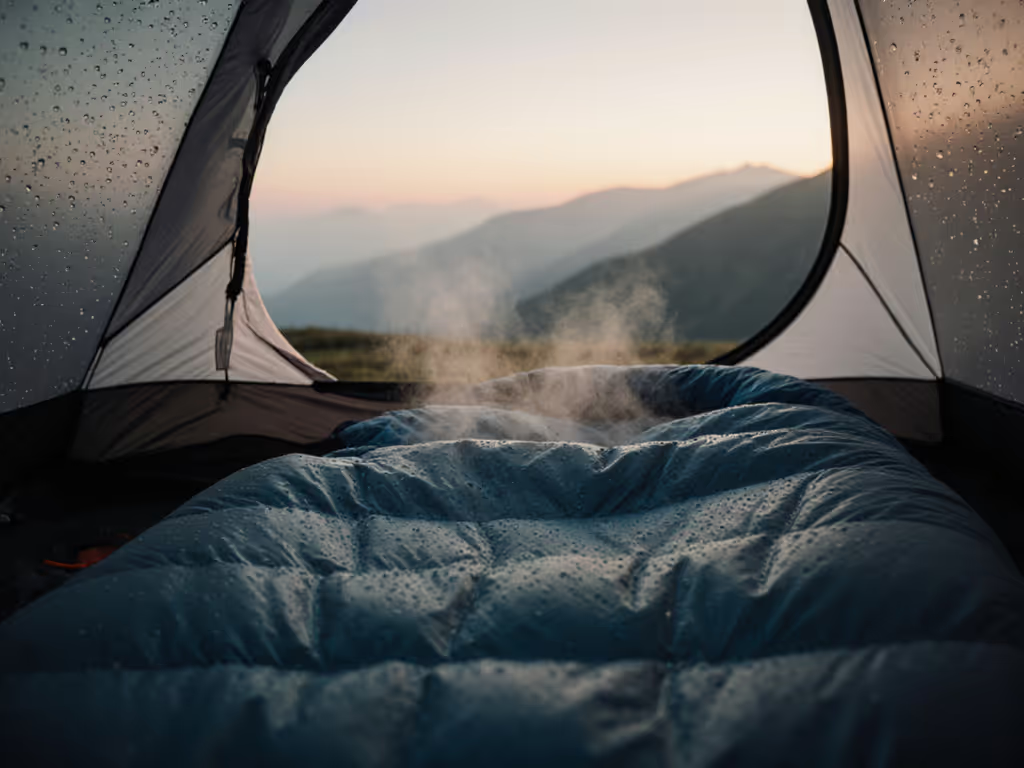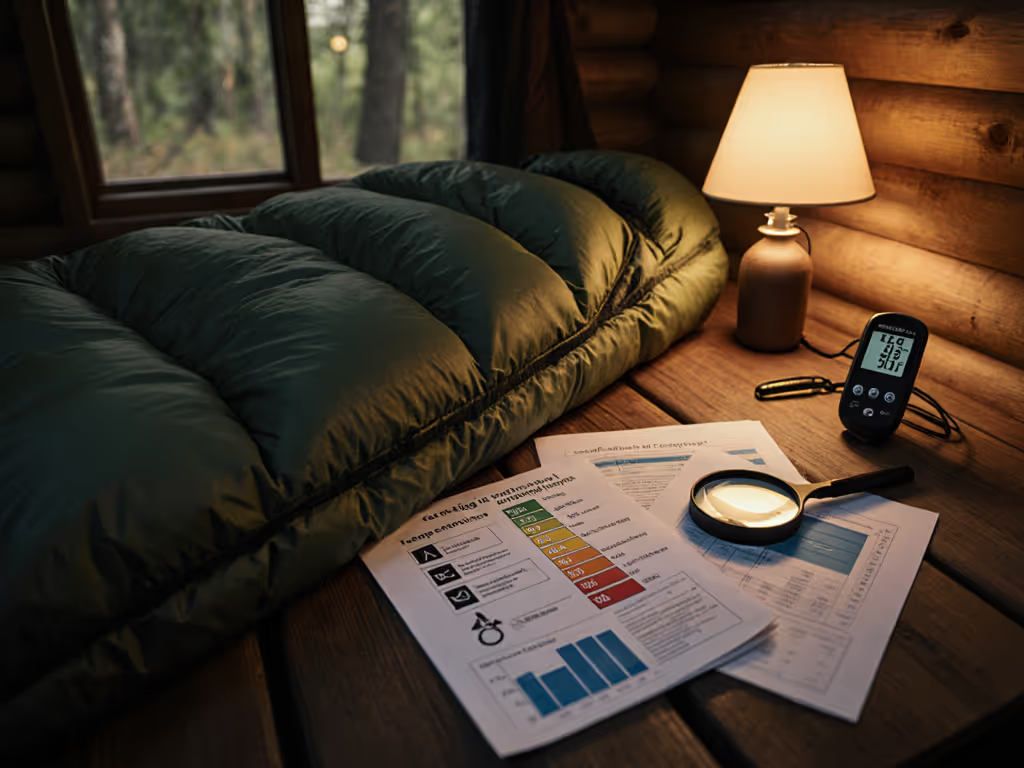
Backpacker Sleep Guide (2025-11-11): Decode ISO Ratings to Pick the Perfect Lightweight, Eco-Friendly Sleeping Bag
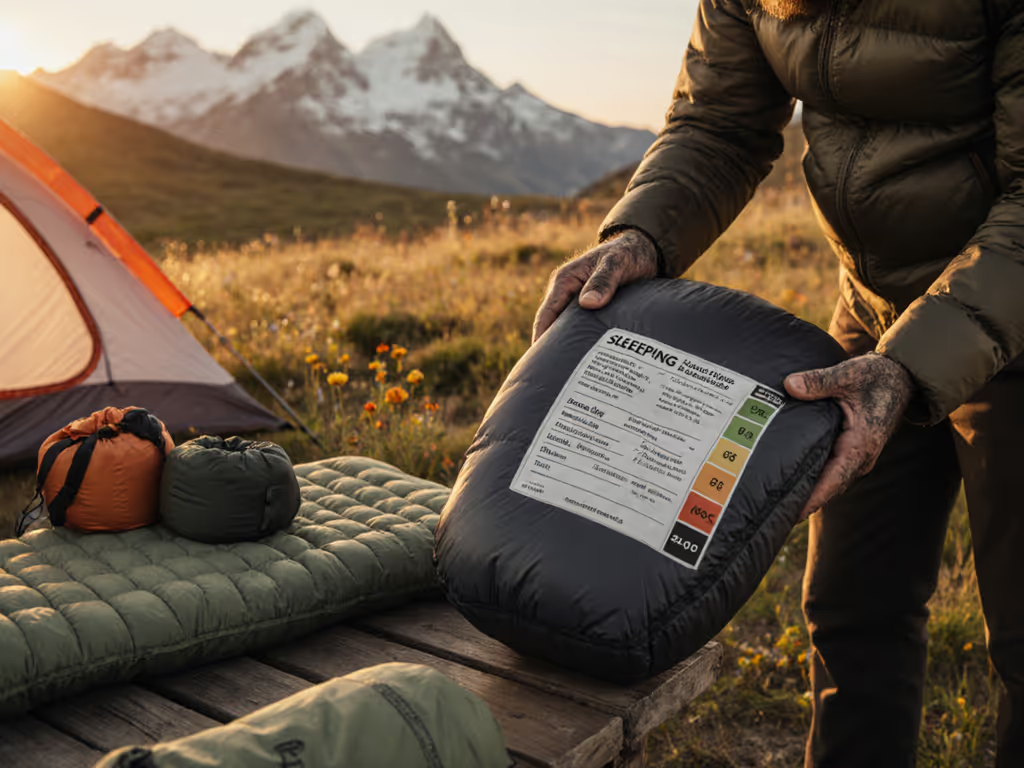
You want a lighter pack, warmer nights, and a smaller footprint on the planet. This blog post for 2025-11-11 shows you how to translate ISO (International Organization for Standardization) ratings into real comfort so you can pick a sleeping bag that actually performs. With Backpacker Sleep as your trail partner, you will get plain-English explanations, real-world examples, and sustainable choices that do not compromise warmth. Ready to turn confusing labels into clear decisions?
Many backpackers struggle to balance warmth, weight, and comfort when faced with lab numbers and marketing jargon. Backpacker Sleep exists to bridge that gap, offering comprehensive reviews on sleeping bags for various conditions alongside practical field tips. We break down ISO (International Organization for Standardization) 23537 ratings, compare down and synthetic in different climates, and show how fit, pad R-value (thermal resistance value), and humidity shape your sleep. By the end, you will know exactly what to look for and why it matters.
How This blog post for 2025-11-11 Helps You Decode ISO (International Organization for Standardization) Ratings
ISO (International Organization for Standardization) 23537 is the global method that replaced EN (European Norm) 13537 for sleeping bag temperature ratings. It uses a heated manikin, standardized clothing, and a controlled lab to produce three key numbers. Comfort is the temperature at which a cold sleeper can rest comfortably. Limit is the lower boundary for a warm sleeper to sleep curled up. Extreme is a survival rating you should not target for normal use.
Because ISO (International Organization for Standardization) testing assumes a specific sleeping pad and clothing, your real-world warmth can vary. Wind, humidity, elevation, calorie intake, and tent design shift the experience night to night. A common best practice is to choose your bag based on the Comfort rating if you sleep cold, or the Limit rating with a safety buffer if you sleep warm. Adding 5 to 10 Fahrenheit degrees or 3 to 6 Celsius degrees of margin covers most backcountry variables.
- Always verify an ISO (International Organization for Standardization) 23537 label with both Comfort and Limit values.
- Match your sleeping pad’s R-value (thermal resistance value) to the expected low. Lower temperatures require higher R-value (thermal resistance value).
- Consider clothing layers you will actually wear, such as a light beanie and base layer, to align with test assumptions.
- If you are between sizes, prioritize a fit that minimizes dead air without squeezing insulation flat.
Down vs Synthetic Insulation: Warmth-to-Weight, Longevity, and Climate Fit
Down insulation is prized for its exceptional warmth-to-weight and compressibility. High-quality goose or duck down with elevated fill power traps more air for the same weight, often packing smaller than synthetic. Industry testing frequently shows a notable warmth advantage per gram in dry conditions, which is why many long-distance hikers prefer down for multi-day trips. With careful storage and occasional cleaning, down can perform for years.
Synthetic insulation, often made from spiral or short-staple polyester fibers, retains more loft when damp and dries faster. In persistently humid environments or trips with limited drying windows, synthetic can be the low-risk choice. It is generally more affordable upfront and less sensitive to mishandling, though it may lose loft sooner over time compared with premium down. For shoulder-season trips with unpredictable precipitation, synthetic or water-resistant shell fabrics can offer peace of mind.
- Choose down for maximum warmth-to-weight and the smallest pack size when you can keep your sleep system dry.
- Pick synthetic for wet coastal routes, rainforest conditions, or when you cannot reliably protect your gear.
- Look for down treated to resist moisture and shells with DWR (durable water repellent) finishes that are PFC (perfluorinated compound) free.
- Backpacker Sleep’s head-to-head field notes reveal how each insulation class behaves after multiple damp nights. For a deeper breakdown, see our down vs synthetic sleeping bags comparison.
Fit, Pad R-Value (thermal resistance value), and Humidity Management

Even the best insulation falters if your bag does not fit. Too roomy, and you spend precious energy heating dead air. Too tight, and you compress loft and feel cold spots. Key specs like shoulder girth, hip girth, and footbox dimensions influence warmth and comfort more than many buyers realize. Use our sleeping bag size guide to dial fit and avoid cold spots. A well-designed draft collar, hood, and zipper baffle help seal warmth where it usually escapes.
Your sleeping pad is half of the system. R-value (thermal resistance value) measures a pad’s resistance to conductive heat loss to the ground. In simple terms, the colder the ground, the higher R-value (thermal resistance value) you need. Many ISO (International Organization for Standardization) lab assumptions approximate a mid-to-high R-value (thermal resistance value) pad, so under-insulating your pad can negate a good bag. For three-season trips, many hikers find an R-value (thermal resistance value) around 3.0 to 4.0 workable, while winter sleepers often aim much higher.
Humidity and condensation add another layer of complexity. Shell fabrics with PFC (perfluorinated compound) free DWR (durable water repellent) finishes shed light moisture, but prolonged dampness eventually reduces loft. Smart tactics include frequent venting, storing your bag in a dry sack, sun-drying during breaks, and using a VBL (vapor barrier liner) in frigid conditions to shift the dew point away from your insulation. Backpacker Sleep includes humidity management notes in every review so you can plan for your climate.
- Check the bag’s draft collar, hood shape, and zipper length to manage venting and heat retention.
- Match pad R-value (thermal resistance value) to expected lows rather than relying on the bag alone.
- Carry a dedicated dry storage solution and consider a VBL (vapor barrier liner) for multi-night subfreezing routes.
Eco-Friendly Choices and Ethical Standards You Can Trust
Choosing a greener sleep system is not only possible, it is practical. Browse our trusted eco-friendly sleeping bags to find sustainable picks that still perform. Many shells and liners now use recycled polyester certified to GRS (Global Recycled Standard), and durable water repellents are increasingly PFC (perfluorinated compound) free. For down, look for RDS (Responsible Down Standard) certifications that trace and audit animal welfare. Several brands also design bags for repairability, extending service life and reducing waste over time.
There are tradeoffs. A life-cycle assessment, or LCA (life-cycle assessment), may show that a durable, long-lived down bag can have a lower overall footprint than synthetic alternatives replaced more frequently. On the other hand, a recycled synthetic bag with robust construction and field-repair features can be an excellent low-maintenance choice for damp climates. Backpacker Sleep highlights these nuances so your values and your itinerary stay aligned.
- Prefer RDS (Responsible Down Standard) down or recycled synthetics certified to GRS (Global Recycled Standard).
- Seek PFC (perfluorinated compound) free DWR (durable water repellent) coatings to reduce persistent chemicals in waterways.
- Pick durable zippers, reinforced baffles, and simple construction details that are easier to repair in the field.
- Backpacker Sleep spotlights brands with transparent LCA (life-cycle assessment) data and take-back programs.
Quick Comparison Tables to Fast-Track Your Pick

When you need answers fast, use these tables as a practical starting point. They synthesize ISO (International Organization for Standardization) concepts, pad selection, and insulation tradeoffs into clear options. Adjust up or down based on your personal metabolism, shelter, and expected wind or humidity.
Interpreting ISO (International Organization for Standardization) Ratings With Night Lows
| Expected Night Low | Target ISO Comfort | Target ISO Limit | Suggested Pad R-Value (thermal resistance value) | Notes |
|---|---|---|---|---|
| 10 C to 15 C or 50 F to 59 F | 10 C or 50 F | 7 C or 45 F | 2.0 to 3.0 | Mild nights, prioritize ventilation and fit. |
| 0 C to 5 C or 32 F to 41 F | 0 C or 32 F | -3 C or 27 F | 3.5 to 4.5 | Classic three-season; add a sleeping hat and dry socks. |
| -5 C to -1 C or 23 F to 30 F | -5 C or 23 F | -8 C or 17 F | 4.8 to 5.5 | Common shoulder season; use a full hood and draft collar. |
| -12 C to -6 C or 10 F to 21 F | -12 C or 10 F | -15 C or 5 F | 5.5 to 7.0 | Winter conditions; consider VBL (vapor barrier liner) and hot water bottle. |
Down vs Synthetic at a Glance
| Factor | Down | Synthetic |
|---|---|---|
| Warmth-to-Weight | Excellent in dry conditions, very compressible | Good, typically heavier for same warmth |
| Wet-Weather Resilience | Loft drops when saturated, slower to dry | Retains more loft when damp, dries faster |
| Longevity | Can last many years with proper care | May lose loft sooner with heavy use |
| Price | Higher for premium fill power down | Usually more budget-friendly |
| Eco Considerations | Seek RDS (Responsible Down Standard) and repairable build | Prefer recycled fibers, GRS (Global Recycled Standard) |
Common Fit Terms and Why They Matter
| Term | Meaning | Why It Matters | Typical Range |
|---|---|---|---|
| Shoulder Girth | Bag circumference around the shoulders | Controls dead air and comfort while layering | 56 to 64 inches or 142 to 163 cm for regular sizes |
| Hip Girth | Circumference at the hips | Impacts mobility and loft retention | 50 to 60 inches or 127 to 152 cm |
| Footbox | Enclosed area around the feet | Prevents compression and cold toes | Varies, look for shaped or overstuffed designs |
| Draft Collar | Insulated baffle around neck and shoulders | Seals warm air inside during cold nights | Best with adjustable drawcord and good overlap |
Real-World Scenarios and a Field-Tested Buying Checklist
Scenario 1, shoulder-season desert: Nights swing from warm to near freezing with low humidity and occasional wind. A down bag near the ISO (International Organization for Standardization) Comfort of the expected low pairs with a midweight pad around R-value (thermal resistance value) 3.5 to 4.5. You benefit from a snug mummy fit that cuts drafts and a shell with PFC (perfluorinated compound) free DWR (durable water repellent) for dew.
Scenario 2, coastal rainforest: Constant drizzle and limited drying windows favor synthetic insulation. Choose a bag whose ISO (International Organization for Standardization) Comfort equals the forecast low and combine with a pad near R-value (thermal resistance value) 4.5. A roomier cut makes venting easier. Store in a dry bag and air it whenever the sun peeks out.
Scenario 3, alpine summer high route: Clear skies and light frost around dawn are common. An ultralight down quilt or bag with a Limit rating at the expected low can work if you are a warm sleeper. Prioritize a high R-value (thermal resistance value) pad, a well-fitted hood if you choose a bag, and strategic venting to manage swings from dusk to dawn.
Use this step-by-step checklist to dial your choice:
- Forecast the true night low at your elevation and campsite exposure.
- Decide if you sleep cold, neutral, or warm, then anchor on ISO (International Organization for Standardization) Comfort or Limit accordingly.
- Pick insulation class based on moisture risk and drying opportunities.
- Match pad R-value (thermal resistance value) to the low; do not under-insulate your ground side.
- Confirm fit by shoulder and hip girth, plus hood and draft collar quality.
- Prioritize eco features such as PFC (perfluorinated compound) free DWR (durable water repellent), RDS (Responsible Down Standard), and recycled fabrics certified to GRS (Global Recycled Standard).
- Plan humidity strategies, from venting to VBL (vapor barrier liner) use in deep cold.
Backpacker Sleep gathers all of this into one place with comprehensive reviews on sleeping bags for various conditions. We test how ratings feel in the field, explain the lab numbers without jargon, and flag sustainability wins that last beyond one season. When you compare models side by side, you will see exactly how warmth, weight, fit, and eco choices stack up for your route.
Backpacker Sleep’s authority, at a glance
- Detailed guides simplifying ISO (International Organization for Standardization) and lab ratings into real-world warmth.
- Comparison of down and synthetic insulation across dry, humid, and alpine climates.
- Actionable tips on fit, R-value (thermal resistance value), and humidity management.
- Focus on eco-friendly, repairable gear you can trust trip after trip.
Looking for a quick mental model before you buy? Think of your sleeping bag as a thermostat and your pad as the insulation in your floor. Both must be set correctly, or the room never feels right. Using ISO (International Organization for Standardization) numbers for the thermostat and R-value (thermal resistance value) for the floor is what transforms guesswork into predictable, cozy nights.
Stats and insights to keep in mind
- Many field testers report that choosing by ISO (International Organization for Standardization) Comfort rather than Limit reduces cold-night surprises for most sleepers.
- In dry conditions, premium down often compresses 30 to 50 percent smaller than comparable synthetic, improving packability according to multiple brand and lab sources.
- Pads with R-value (thermal resistance value) of 4.8 or higher are commonly paired with colder-rated bags in lab testing assumptions.
With the right framework and a clear checklist, your sleep system becomes as dependable as your headlamp. That is the difference Backpacker Sleep brings to every review and guide. When conditions shift, your understanding stays solid.
One-page takeaway
- Pick your insulation class by climate risk, not just by weight.
- Size your bag to reduce dead air while maintaining loft.
- Set your pad R-value (thermal resistance value) to the actual low you expect to face.
- Anchor on ISO (International Organization for Standardization) Comfort if unsure, and add a small safety buffer.
Your next step is simple. Browse a curated lineup that speaks your language, not just lab speak. Backpacker Sleep’s side-by-side comparisons and clear guides make it easy to choose with confidence and sleep like you earned it.
Ready for greener nights and lighter miles? You can have both. With the right ISO (International Organization for Standardization) interpretation, a dialed fit, and eco-forward materials, comfort and conscience travel together.
Case-by-case clarity is what wins. Whether you trek through monsoon-soaked forests, starry alpine traverses, or crisp desert plateaus, the same method applies. Decode the rating, match the pad, choose the insulation, and manage moisture.
Backpacker Sleep is here when you are ready. Compare options, read field notes, and explore sustainability markers that match your values. Your warm, light, and ethical sleep system starts here.
Trail-tested pro tips
- Store down uncompressed at home to preserve loft and extend service life.
- Air out your bag daily on trail, even for 10 minutes, to push off cumulative moisture.
- Carry repair tape to patch small shell snags and protect baffles.
- Use a liner to add a small warmth boost and keep the bag cleaner between washes. Our sleeping bag liners warmth guide explains types, expected temperature boosts, and when they’re worth the weight.
What Backpacker Sleep promises is clarity. Our mission is translating ISO (International Organization for Standardization) and lab insulation data into the way you actually sleep outside. That means temperature honesty, fit reality, and sustainability that makes sense for your miles.
--
Ratings decoded, fit dialed, and sustainability aligned, you now have a simple method for warm, light, low-impact sleep. Imagine opening your shelter and knowing tonight’s bag choice just works. In the next 12 months, expect smarter materials and even clearer ISO (International Organization for Standardization) labeling to make decisions faster.
What trip will you plan first using this blog post for 2025-11-11 as your guide to confident, comfortable nights?
Choose Smarter With Backpacker Sleep: Reviews, Ratings, Eco Guidance
Get comprehensive reviews on sleeping bags for various conditions and clear ISO (International Organization for Standardization) insights on fit, insulation, and eco choices for backpackers, hikers, and campers.

